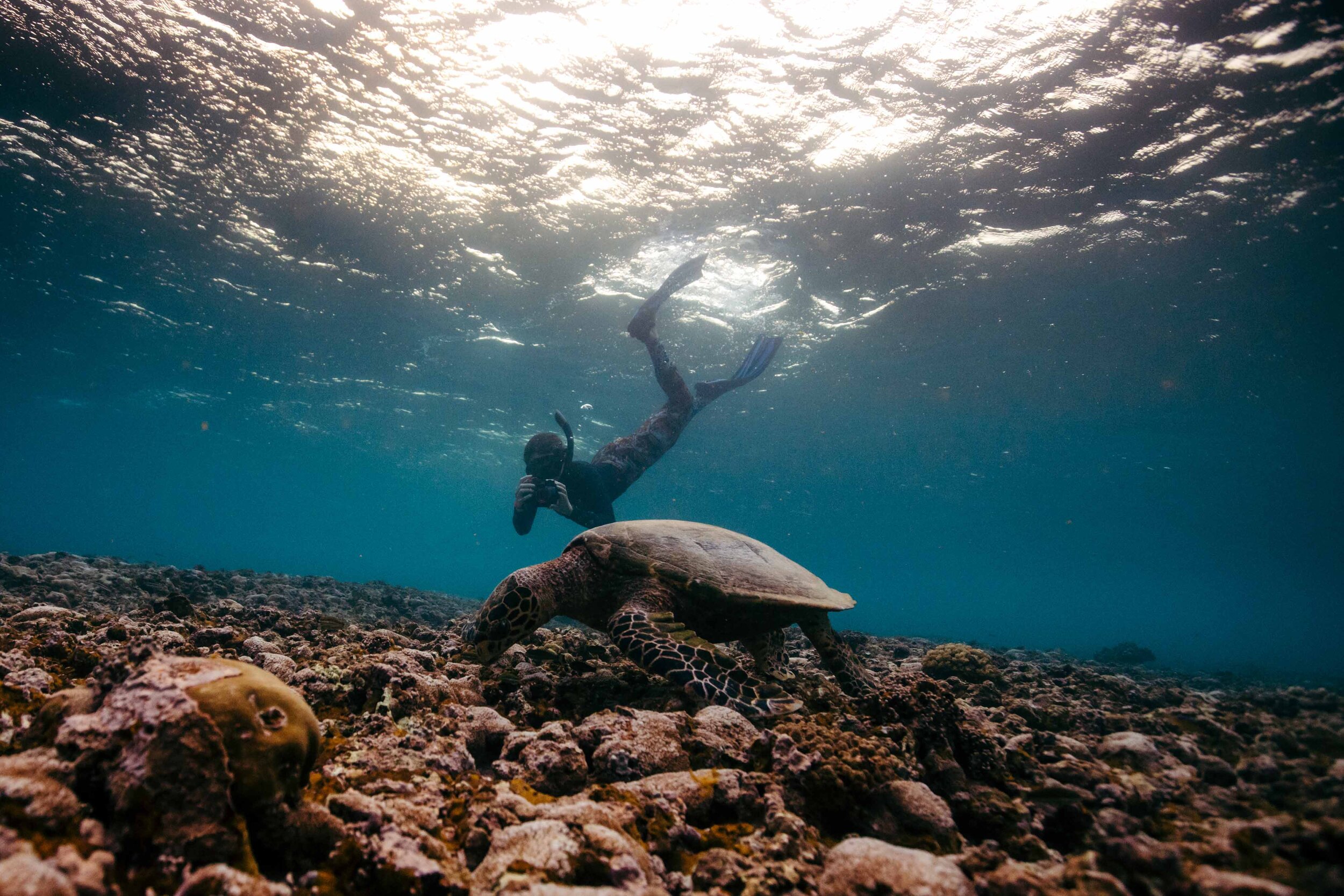
SEA TURTLE
CONSERVATION
OUR CRITICALLY ENDANGERED
SEA TURTLES
In the Maldives, critically endangered green sea turtles (Chelonia mydas) were once widely harvested for their meat for human consumption. Additionally, sea turtle eggs were collected from nests as a food source. Critically endangered hawksbill turtles (Eretmochelys imbricata) were often harvested to fuel tourism-driven demand for tortoiseshell - the polished carapace of hawksbill turtles often fashioned into jewellery and other decorative items. In 1995, amid concerns of the sustainability of harvest rates, a nationwide ban was placed on turtle harvests. This was followed in 2005 and 2016 with the implementation of egg harvesting bans. Despite this legislation, illegal harvesting of turtles and their eggs still occurs throughout the Maldives.
SEA TURTLE
NESTING
Olhuveli- the island on which Six Senses Laamu is based - is fortunate to have high turtle nesting activity. The island has played host to 197 turtle nests between the years 2011-2024, with 21 nests in 2024 alone. There is no true nesting season identified at Six Senses Laamu, and nesting happens unpredictably.
Olive Ridley Project (ORP) staff monitor each and every nest on the island to determine nest success - i.e., the proportion of eggs that hatch and the number of hatchlings that emerge. ORP is also recording sand temperature data during incubation period, as the temperature of the nest determines the sex of the developing embryos, with higher temperatures being corelated with a higher percentage of females. It is our aim to also conduct genetic sampling of hatchlings to understand the nesting population of Laamu and collect first information on the genetic diversity of green turtles in the Maldives in general.
In 2024, Dr. Stephanie Köhnk trained ORP for a microplastics research study. In 2025 we will launch this study making Laamu one the first Maldives sites to assess microplastics’ effects on sea turtle nests. Sand samples from Six Senses will be paired with nest temperature data and then will be analyzed in Greece. Research findings aim to identify harmful microplastics and mitigate their impact. Microplastics have tripled in two decades, potentially disrupting turtle egg development and sex ratios. This initiative, part of a collaboration with MEDASSET, advances conservation strategies for nesting habitats.
PHOTO
IDENTIFICATION
Securing the protection of Laamu’s turtle population first requires greater understanding of the population itself, and the pressures which threaten it. Olive Ridley Project aims to better understand population dynamics in Laamu and maintains a database of identified turtles. Individual turtles possess unique facial scales which allow for re-identification over time without the application of invasive capture-mark-recapture methods. This helps to infer the size of the wider Laamu turtle population. ORP’s Laamu database currently contains more than 1150 individuals and is the second largest database by atoll in the Maldives. The database is growing consistently year after year with the help of trained staff as well as enthusiastic citizen scientists. We still do not know the true size of Laamu’s turtle population, as we are constantly identifying new individuals. Guests at Six Senses Laamu, and on passing liveaboards, can contribute to ORP's database by submitting ID photographs of turtles encountered in Laamu to laamu@oliveridleyproject.org.
BEACH GUARDIAN
PROGRAM
The Olive Ridley Project (ORP) monitors nesting activity on Gaadhoo, an uninhabited island in Laamu Atoll recognized as one of the Maldives' most significant green turtle nesting sites. In December 2021, Gaadhoo’s nesting beach was designated a Marine Protected Area, marking a crucial step in safeguarding this vital habitat.
In 2023, ORP, in collaboration with the Environmental Protection Agency (EPA) and other stakeholders, launched the Sea Turtle Beach Guardian Programme to enhance protections for nesting turtles. This initiative includes monitoring nesting activity, recording nest numbers, and disguising turtle tracks to deter illegal egg harvesting. The program has already shown remarkable success, with suspected illegal take dropping from a historical average of 54% to just 2% of nests in 2023 and 12% in 2024 on Gaadhoo Island.
Building on this progress, the program has expanded to Maavah in 2024, an island known for high levels of turtle meat harvesting. A dedicated Sea Turtle Conservation Officer now leads efforts there, utilizing drone technology to monitor for illegal activity and promote accountability within the community.
At the heart of the Guardian Programme is a strong emphasis on education and community engagement. By fostering local involvement and reshaping perspectives on sustainability, the programme is driving meaningful change in sea turtle conservation and the protection of marine ecosystems.

ABOUT
THE OLIVE RIDLEY PROJECT
ORP has been working in the Maldives since 2013, with the goal to protect sea turtles and their habitats in the Indian Ocean.
One of the most critical aspects of ORP’s work is the collection of data on lost, abandoned or discarded fishing gear (ghost gear) found drifting in Maldivian waters. Each year, ghost gear entangles hundreds of sea turtles, many of whom suffer horrendous injuries, often obtained whilst struggling to free themselves. ORP recovers ghost gear and collects data which can be used to track its origin. This information can determine the types of net most often lost or discarded, and the types of net most likely to entangle turtles. ORP can then work with the relevant manufacturers and fishers in the wider Indian Ocean to help reduce the ghost net problem. Here in Laamu, we do not find entangled turtles as often as in atolls further north, however ORP have rescued 12 sea turtles since partnering with Six Senses Laamu in April 2018.





